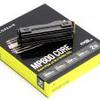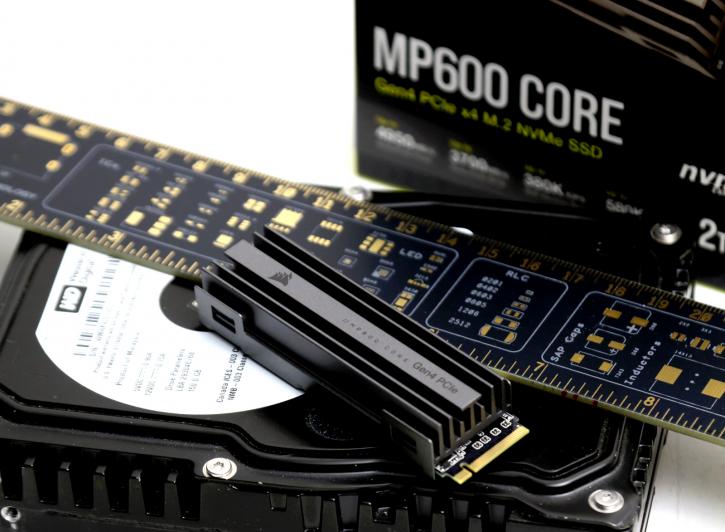Introduction
Corsair MP600 CORE PCIe 4.0 NVMe SSD
Danger Will Robinson: we're breaching the 5 GB/sec marker
We review a new revision Corsair MP600 PCIe Gen 4.0 SSD; this is the CORE model, which is among the better performing NVMe SSDs we have tested to date, rating at 5 GB/sec performance levels. Corsair is trying to offer a more price-competitive product range; see, the 2 TB version tested costs 16 cents per GB. In this round, however, there's a twist as the storage unit is QLC NAND based. There is more to it though, Corsair announced the availability of several new SSD products. The Core series offers high-speed performance in the 5 GB/sec range at more affordable prices, but there's also an enthusiast-class PRO and HXE model with a new Phison controller and such storage units can peak towards a blistering 7 GB/sec. Yeah, it's crazy where we are in 2021 with performance numbers that fly all over the place like it's nothing. Below a quick overview of the new SKU (product) codes and prices.
- CSSD-F1000GBMP600COR 1TB € 159.99
- CSSD-F2000GBMP600COR 2TB € 319.99
- CSSD-F4000GBMP600COR 4TB € 649.99
- CSSD-F1000GBMP600PRO 1TB € 229.99
- CSSD-F2000GBMP600PRO 2TB € 439.99
- CSSD-F2000GBMP600HXE 2TB € 464.99
You can see that our tested 2 TB CORE SSD will get an MSRP of 320 EUR; divide that by 2048 GB, and you'll notice that you are paying 16 cents per GB. The CORE and PRO model obviously all are intended to be seated into a PCIe Gen 4.0 x4 m.2 connector slot. And yes, you can seat it into any PCIe 3.0 compatible PC as well; however, if you place it into a Ryzen 3000 / 5000 based PC with a compatible chipset, some magic happens as you are running 5000 MB/s numbers and higher opposed to that 3000 MB/sec threshold, all thanks to the PCIe 4.0 interface and a little TLC, well QLC ... from Phison and Toshiba/Kioxia. At the time Corsair released the now older MP600 series (TLC) at roughly 25 Cents per GB; you can now purchase the 1TB, 2TB, and even 4TB model at that 16 cents per GB range. That is progress .. however, QLC NAND will come with some caveats, endurance being the most magnanimous dilemma. Our 2TB model has a classified 400 TWB value. Not bad, but certainly not heaps either. A second predicament with QLC is its inferior writing performance; these create write holes where much data is written and slows down. We can already tell you, though, that this problem was bypassed with a pSLC cache combined with a DRAM buffer. The specs are fabulous, the numbers eye-soaring, but will this unit deliver what it claims?
- Max Sequential Read - Up to 4950 MBps
- Max Sequential Write - Up to 3700 MBps
- 4KB Random Read - Up to 380K IOPS (QD32)
- 4KB Random Write - Up to 580K IOPS (QD32)
- Endurance (TBW) up to 400 TBW (2TB model)
The SSD is a Non-Volatile Memory Express (NVMe 1.3) M.2 form factor SSD; it has been fitted with new Vertically stacked QLC written (4-bits per cell) NAND. The performance numbers of a proper SATA3 SSD offers these days are simply excellent, but with the more niche NVMe SSDs, you can easily quadruple performance, which offers serious numbers. The unit follows a smaller M.2 2280 form factor (8cm), so it will fit on most ATX motherboards capable of M.2 just fine. Anyway, wanna see what the core performance of this product is (great pun huh?)? Next page and onwards into the review then.


